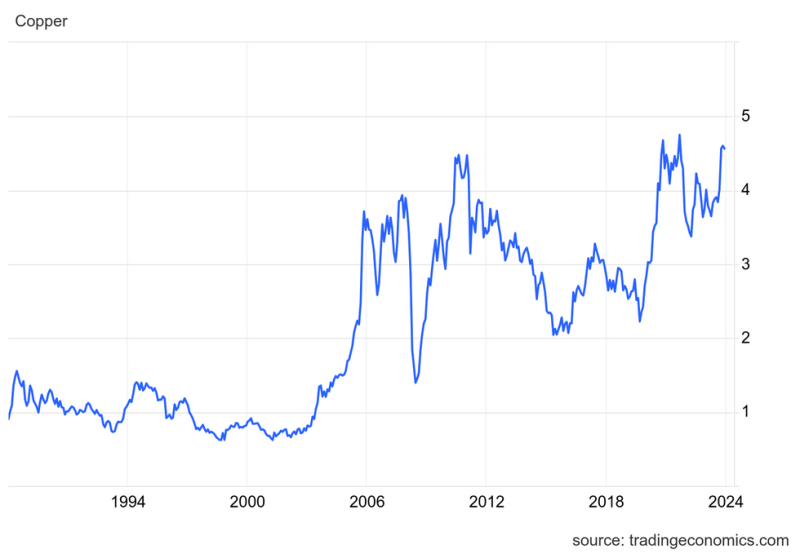Throughout history, copper has been a crucial element, appreciated for its versatility and conductivity. The price of copper has fluctuated over time due to various factors including demand, supply, and economic conditions. Let’s take a closer look at the historical prices of copper to gain insights into its significance and impact on the market.
Ancient civilizations, such as the Egyptians and Mesopotamians, valued copper for its malleability and ability to conduct heat and electricity. It was used in crafting tools, weapons, and decorative items. The scarcity of copper made it a precious metal, with its value closely tied to its availability for trade and bartering.
As societies evolved and industrialization took hold, the demand for copper surged. The development of steam engines, electrical wiring, and telecommunications systems further increased the need for copper, driving up its price. The industrial revolution marked a turning point for copper, as it became a cornerstone of modern infrastructure and technology.
In the 20th century, copper prices experienced significant fluctuations due to geopolitical events and economic fluctuations. World Wars, political unrest, and market speculation all influenced the price of copper, leading to booms and busts in the market. The discovery of new copper deposits and advancements in mining technology also played a crucial role in shaping copper prices.
The late 20th and early 21st centuries witnessed a steady increase in copper prices as emerging economies like China drove demand for infrastructure development. The rise of renewable energy sources such as solar and wind power further boosted the demand for copper, given its essential role in electrical systems. The shift towards electric vehicles also contributed to the surge in copper prices, as they require significantly more copper wiring than traditional vehicles.
In recent years, factors such as trade tensions, supply chain disruptions, and the global pandemic have impacted copper prices. The increasing focus on sustainability and efforts to reduce carbon emissions have led to greater demand for copper in green technologies. As the world continues to prioritize renewable energy and digital connectivity, copper remains a vital commodity that will continue to shape the global economy.
In conclusion, the historical prices of copper reflect its significance as a fundamental element in human progress and industrial development. From ancient civilizations to modern societies, copper has played a crucial role in shaping our world. Understanding the historical trends of copper prices provides valuable insights into the dynamics of the market and the interconnectedness of global economies. As we look towards the future, copper will undoubtedly remain a key player in driving innovation, sustainability, and technological advancements.

